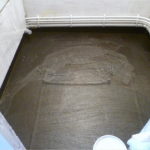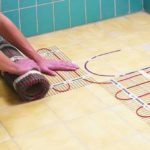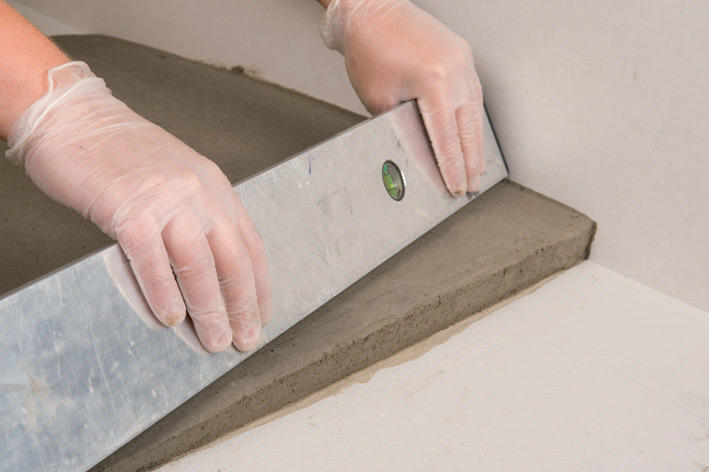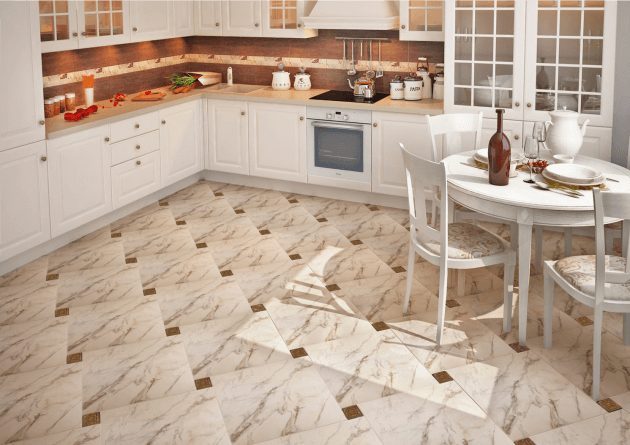Preparing the floor for tiles
Tiles as a floor covering are a wonderful solution for a living space. And in order for it to last for a long time, it is important not only to install it correctly, but also to properly prepare the surface. The floor is considered ready for installation if the surface:
- Clean;
- Flat;
- Quite solid.
In this case, the nuances of preparation will depend on the base material for installation: boards, concrete screed, and so on.
The content of the article
What you need to prepare the floor for tiles
 In order to prepare the floor for installation of tiles, you should prepare the following materials and tools:
In order to prepare the floor for installation of tiles, you should prepare the following materials and tools:
- Level. They determine surface irregularities that require elimination;
- Chalk to mark places where corrections are required;
- Aluminum rule (preferably 2 m long);
- Cement, water, sand for preparing a leveling mixture;
- Concrete;
- Primer.
This list is the basic items you may need.
Reference! Before starting work, be sure to remove the old coating: boards, linoleum, chipboard.
How to prepare a floor for tiles
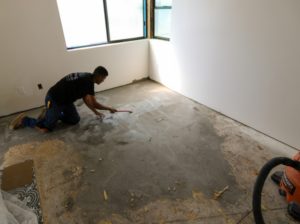 To level the surface, follow these steps:
To level the surface, follow these steps:
- If there are protrusions on the surface, cut them off with a scalpel or a stationery knife;
- First, use a vacuum cleaner to clear the floor of debris and dust:
- Then, using a building level, determine the existing unevenness;
- Mark areas that need correction with chalk;
- Next, apply the solution and level the floor;
- If there are gaps between the floor and the wall, seal them with concrete;
- Wait until the surface is completely dry;
- Prime the base thoroughly.
Attention! The floor level directly depends on the purpose of the room. For example, in the kitchen it should be level, but in the shower it should slope towards the drain.
Advice from professionals
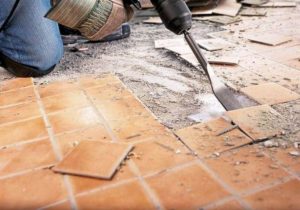 And finally, a few tips from tiling experts that will help you achieve the best final result:
And finally, a few tips from tiling experts that will help you achieve the best final result:
- Under no circumstances should tiles be laid on a plank floor, because, despite the smooth and hard surface, the boards begin to “play” over time, which can lead to deformation and breakage of the tiles;
- The best method for priming the base is to use PVA glue diluted with water. To use it, just pour it on the floor and, using a spatula of sufficient width, spread it over the surface;
- In order to smooth out uneven floors, it is best to use a special tile adhesive. It is elastic enough to fill all the unevenness. And in order for the mixture to dry faster, add alabaster or gypsum to it;
- The prepared surface does not have to be flat; small holes and irregularities are allowed;
- If a cement-sand screed is planned as the base, then its thickness should exceed two centimeters;
- After preliminary work on leveling the base, you need to wait at least twelve hours. During this time, the screed will have time to dry sufficiently;
- If you are using a self-leveling mixture, then when working with it, make sure that no bubbles form in the layer. To remove them, you can go over the surface with a needle-shaped plastic roller.


